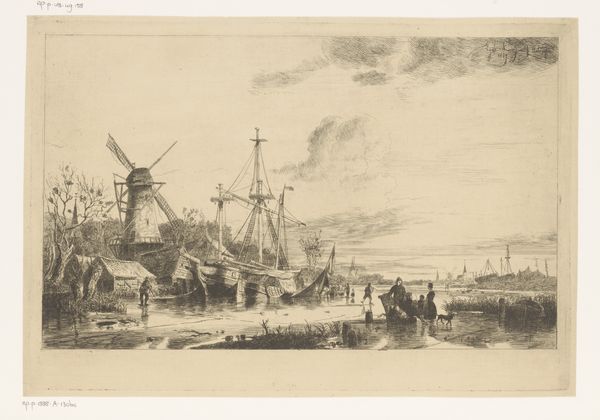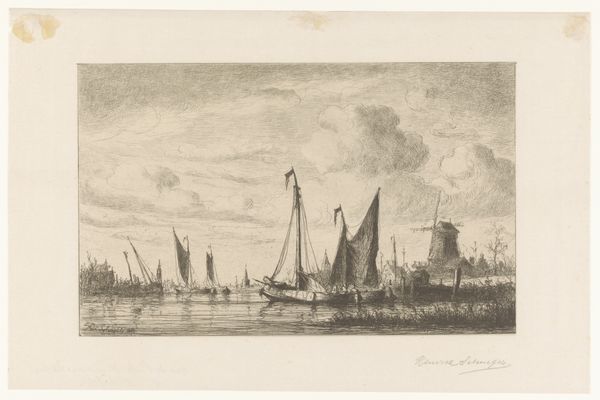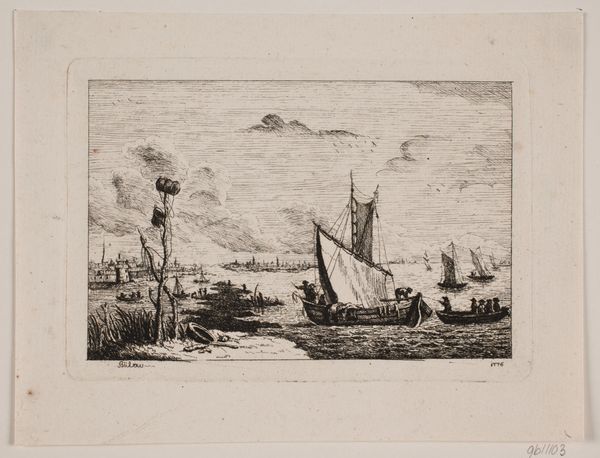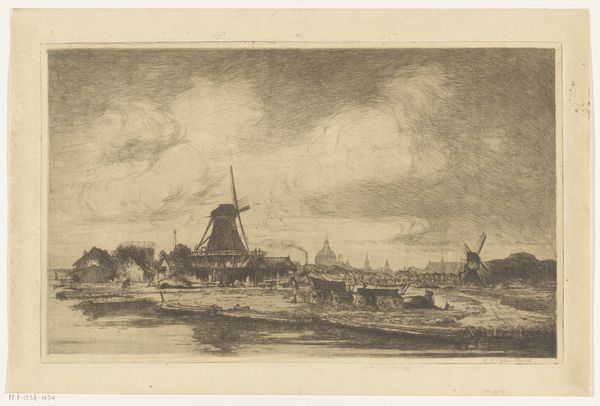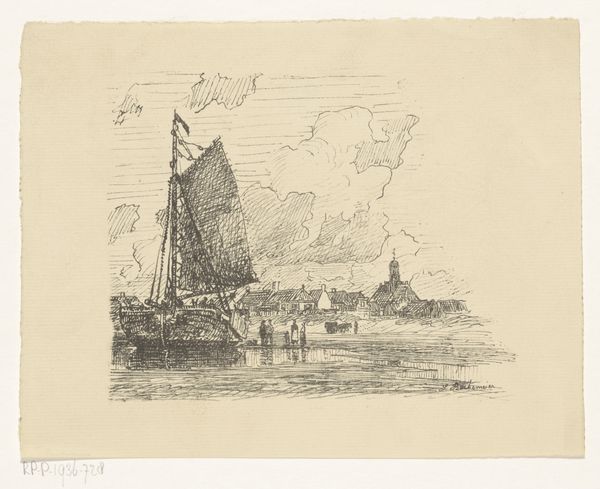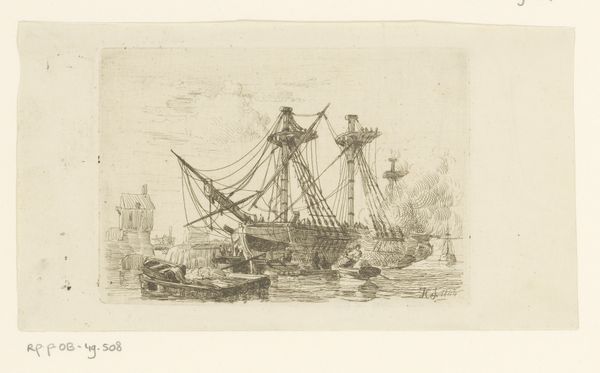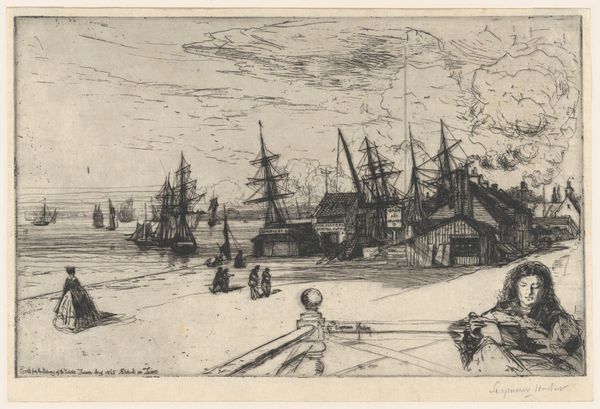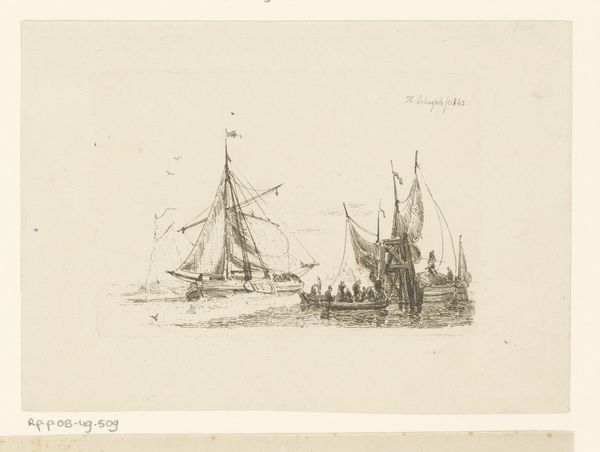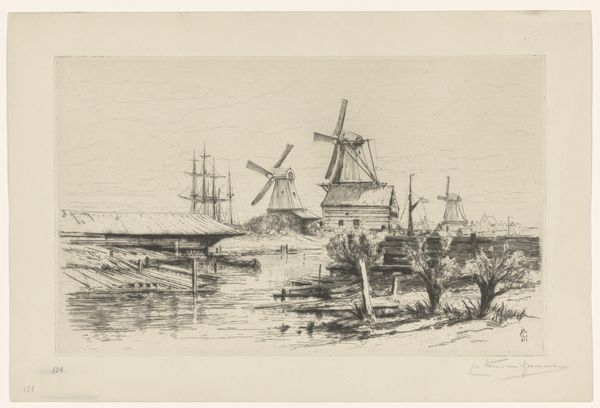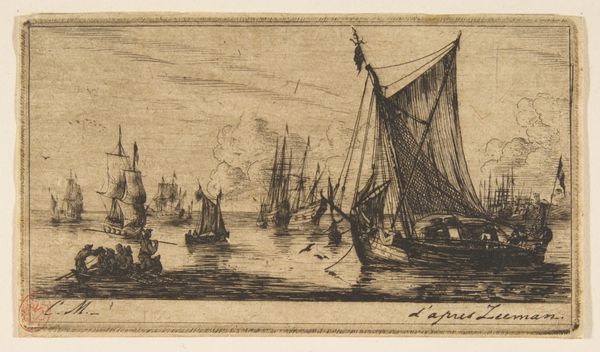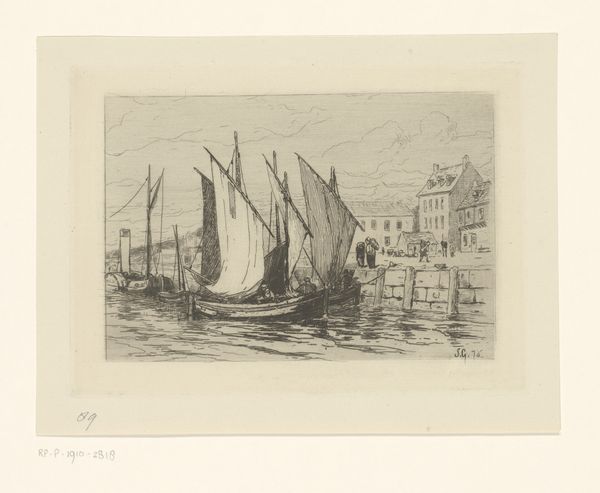
print, etching
#
dutch-golden-age
# print
#
etching
#
landscape
#
etching
#
genre-painting
#
realism
Dimensions: height 160 mm, width 235 mm
Copyright: Rijks Museum: Open Domain
Curator: Henri François Schaefels created this etching titled, "Twee boten langs de kant bij een dorp met windmolen" in 1882. The realism and landscape style pull the viewer into the detailed imagery. Editor: It strikes me as quiet. A village scene captured in a fleeting moment, full of textures—the grainy sky, the wood of the boats, the rough brick of the buildings. I’m drawn in by its detail, though the palette is limited to monochrome. Curator: Considering Schaefels' focus, that he produced the image using printmaking techniques—namely etching—highlights the way reproducible processes can convey the feel of lived reality. This was, in some ways, industry standard practice, especially for someone focused on maritime activity like Schaefels was. Editor: Industry is certainly there, subtly. Note how the boats are positioned adjacent to both the domestic architecture of the village *and* the industrial form of the windmill. Boats weren't just transportation; they represented livelihood and trade routes, symbolized by water connecting communities and lands, with all their implicit historical meaning and memory. Curator: Exactly! Moreover, let's consider the materiality itself: printmaking as a *social* act. He chose to make multiple copies for circulation to reach broader audiences. The labor and process challenge a sense of "high art" by entering a commercial domain, as an artist providing visual journalism through his prints of seascapes. Editor: The very inclusion of the windmill—a key architectural symbol of Dutch identity—situates this image within a powerful, visual language of the region’s history. As the windmill transforms wind into power, so too, did Holland transform natural resources into economic and political strength. Curator: True, but I find myself more invested in how it portrays not just grand historical narrative, but small community dynamics along the shorefront that the artist found worthy of reproduction and mass consumption. Editor: Ultimately, that is one of printmaking’s greatest gifts. This is how powerful symbols, even everyday objects or places, root themselves in collective consciousness through artistic intervention. Curator: Right. Analyzing the print reminds us how artistic output acts as a tangible reflection of production methods, audience accessibility, and the commodification of visual culture, whether it is the boats, or even the landscape, as a means of artistic and commercial viability. Editor: Indeed. Looking beyond a single image, to understand symbolism as part of a larger cultural identity truly shifts how we see and understand the world.
Comments
No comments
Be the first to comment and join the conversation on the ultimate creative platform.
